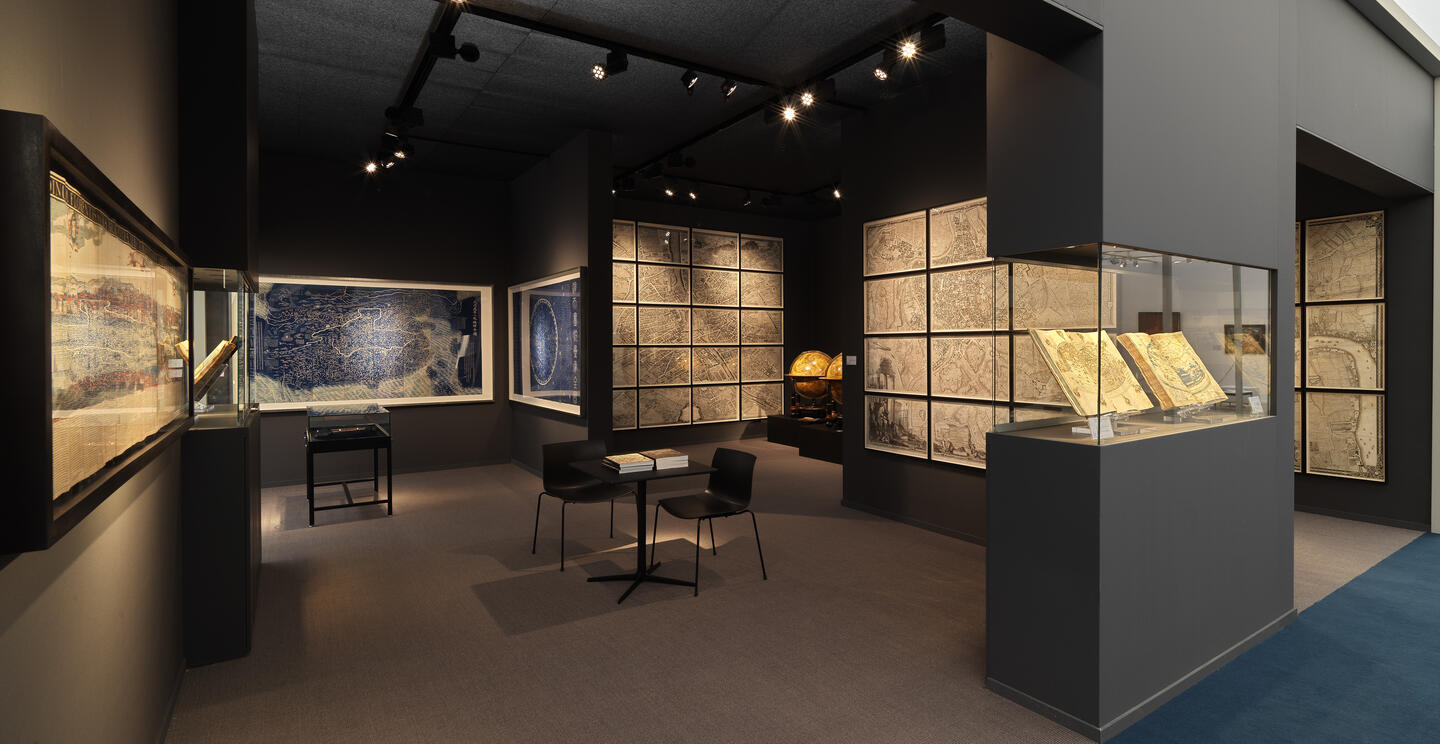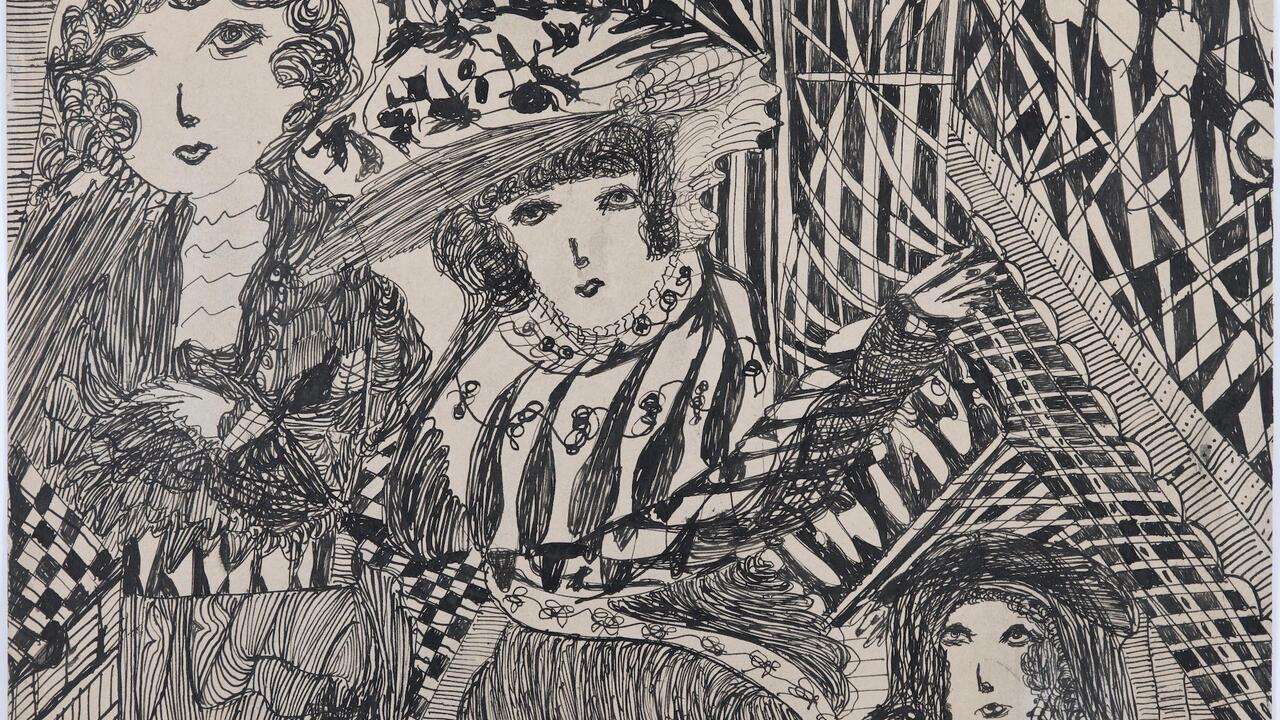London According to: Daniel Crouch of Daniel Crouch Rare Books
The antiquarian map specialist discusses London’s ‘extraordinary expertise’ and how the city is no longer the 'worst culinary destination on earth'
The antiquarian map specialist discusses London’s ‘extraordinary expertise’ and how the city is no longer the 'worst culinary destination on earth'

Daniel Crouch Rare Books opened its St James’s gallery in 2011, followed by a gallery on New York’s Upper East Side in 2017. Specializing in maps and atlases, Crouch had sold works to the British Museum, the British Library, the Library of Congress, USA, the Bibliothèque Nationale de France and the Rijksmuseum, Netherlands, among others. He is responsible for the sale of the most expensive map ever sold on the open market – the 1531 Maggiolo planisphere – the three most expensive printed atlases ever sold – the 1477 Bologna Ptolemy, the Doria atlas and the D’Aragona Lafreri – as well as two of the five most expensive printed maps ever sold – the De Barbari map of Venice and Matteo Ricci’s 1602 map of the world. He considers changes tastes in cartography, London’s heterogeneous expertise and pubs within 20 metres of his desk.
What’s great about your gallery’s location?
We are fortunate in being located within beautiful St James’s, and surrounded by friends and colleagues in complementary businesses with extraordinary world-class expertise. In any other city, the ‘St James’s Cultural Quarter’ would be fêted, mapped and marked with flags and events. In London we take ourselves for granted and undervalue what we have. I’m not sure why we are so reticent. Maybe because it has been this way for so long? Perhaps I should do something about it?

What changes have you seen in London in the last few years?
Well, depends on your period of definition – I was 50 last month, so ‘few’ is getting longer! But, in my adult lifetime, London has gone from being one of the worst culinary destinations on earth to a foodies’ paradise. We are also gloriously liberal and tolerant. It’s worth mentioning that when other places are, increasingly, less so.
‘In London we take ourselves for granted and undervalue what we have.’
What’s different about the London art world to that of other cities?
The heterogeneity of London’s expertise and clientele: there is an extraordinary array of knowledgeable people in fields across the whole art market, and we see visitors from the world over. This is, in part, a function of London’s status as a travel hub, visited by all corners of the earth, but also a result of the British post-WWII university education system. I am not at all certain for how long either of these will continue to apply post-Brexit and post-government budget cuts.

How do you think that the way people see (and show) art is changing?
There have been two huge changes in my lifetime: one profound and political, the other ephemeral and aesthetic.
The political change is that works of art are viewed less in terms of their physical qualities, and more from their means of production. People are less inclined to buy ‘a pretty map’ than they are to collect maps by ‘female mapmakers’, say, or ‘thematic cartography’, such as persuasive cartography or propaganda. It is more a thoughtful, and interesting a viewpoint.
The aesthetic change comes as tastes have tended towards a clean and minimalist style. This started with architecture, both exterior and interior, transferred to institutions, as museums and galleries favoured daylight and space with white walls and less stuff, and, finally, moved into our homes with Bulthaup and Bang & Olufsen. We’ve stripped back our collecting in tandem with such changes: people buy fewer sets of maps – I can’t remember the last time I sold a ‘world and four continents’, for example. Customers now prefer single ‘statement’ pieces, usually in a simple box frame with no mount. It is neither good nor bad this way: it just is and I’m bloody glad we ditched the gilt and pearwood frames when we did!

You’re bringing half a millennium of maps to Frieze Masters this year – can you talk about your presentation?
Try and stop me! This year we are planning something special: ‘“I wisely started with a map!” – a Collection of Fictitious Cartography’. It is something of a daddy/daughter project. After a tipsy night in the pub, my elder daughter Sophie and I decided to put together a collection of maps in fantasy fiction. Starting with Homer’s Odyssey – whose place names appear alongside real cities in Ptolemy’s Geographia – we cover More’s Utopia, Dante’s Inferno, Hobbes’s Leviathan, Gulliver’s Travels, Robinson Crusoe, Treasure Island (of course!), and, from the master of fantastical geography, Jules Verne’s Voyages Extraordinaires. Moving into the twentieth century, the works of the Inklings – Tolkien and C.S. Lewis – are well represented, in addition to Kenneth Grahame, A.A. Milne, and, my personal favourite, Goscinny and Uderzo’s Astérix. More modern literature comes in the form of Phillip Pulman, J.K. Rowling, George R.R. Martin’s Game of Thrones series, and, arguably the most fantastical of all, Dungeons & Dragons, the humble photocopied origins of which, along with me, turned 50 in 2024.

Which areas of your field excite you at the moment?
I LOVE that maps in general are suddenly sexy (they are, honest!). I think people find cartography increasingly fascinating for a variety of reasons, all of which seem to coincide in today’s climate: we travel more, we emigrate more, we encounter more maps than ever before. Think about it: when you book a restaurant, call an Uber, look up any place on Google – you see a map. Turn on the news, whether it’s Ukraine, Gaza or North Korea, you are confronted by cartography. We like maps more because we see maps more.
I find thematic mapmaking particularly interesting at the moment – maps that show more than geography. Geographic data visualization has come on leaps and bounds in the digital age and I love both modern uses of cartography as well as the origin of such maps. I love to compare the mapping of Covid with John Snow’s Cholera Map, for example, or the defence of Kyiv with Minard’s map of Napoleon’s march on Moscow. Maps are cool, current and convincing!

Favourite museum or gallery in London?
Easy: Sir John Soane’s Museum – intimate in scale and scope, perfectly curated and just plain gorgeous.
Last exhibition you went to?
The Stuart and Mimi Rose Exhibition at the opening of the new wing of the Folger Shakespeare Library in Washington DC.
Can you recommend a place to eat near the gallery?
Andrew Edmunds, on Lexington Street in Soho: a perfect little romantic bistro with uncomplicated and interesting food, and the best-value wine list in London. They also happen to be a printseller.

Best bar or pub near your gallery?
Depends on the season. In winter I don’t like to stray far, so, within 20 metres of my desk, The Golden Lion on King Street is the nearest (and very good). When the weather is warm enough, one of St James’s great summer secrets is The American Bar in the back yard of The Stafford Hotel.
Best thing about London?
Frieze Masters!
Worst thing about London?
Perpetual unattended roadworks.
Daniel Crouch Rare Books is taking part in Frieze Masters, 9 – 13 October 2024, The Regent’s Park.
Further Information
Tickets to the fairs are on sale – don’t miss out, buy yours now. Alternatively, become a member to enjoy premier access, exclusive guided tours and more.
To keep up to date on all the latest news from Frieze, sign up to the newsletter at frieze.com, and follow @friezeofficial on Instagram, X and Frieze Official on Facebook.
Main image: Daniel Crouch Rare Books at Frieze Masters 2023. Courtesy of Frieze and Michael Adair. Photo by Michael Adair






















